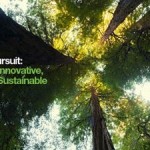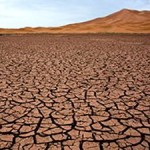
Dhaka – “For South Asian cities like Dhaka and Delhi, maintaining urban air quality and protecting its sustainable urban commuting practices are some of the toughest challenges. Delhi, while having made some significant strides in meeting air quality challenges, has slipped and made terrible mistakes as well. Dhaka is more fortunate. Its strength remains in its huge base of zero-emission non-motorized and sustainable public transport. It just has to recognize and act upon this immense advantage and strength.”
This conclusion emerged out of a Country Media Briefing conducted January 22 by the New Delhi-based research and advocacy organization, Centre for Science and Environment (CSE). The briefing’s focus was the challenge of urban air quality and mobility in South Asian cities, and experts from CSE and Dhaka addressed the assembled media persons. CSE organized this briefing with the active support of and assistance from the Dhaka-based Forum of Environmental Journalists of Bangladesh (FEJB).
CSE, one of India’s leading environmental think-tanks, has been in the fore-front in combating air pollution in Delhi. In the mid 1990s, its ‘Right to Clean Air’ Campaign had kicked off a sequence of events which resulted in India’s capital getting one of the largest CNG-run public transport service and other important measures. Air quality registered a visible improvement following this. But the recent data indicates Delhi is fast losing out on the gains from those transport reforms, largely due to its spiraling numbers of private and diesel-run vehicles.
The briefing in Dhaka was the first of a series of media meetings that CSE is planning across the South Asian region. These meetings will focus on environment and development issues of country-specific and local relevance and interest, said CSE’s media team which organized this event.
South Asian Cities have Begun to Act
Action on air pollution has begun in our cities and even shown results. Dhaka has already initiated its first generation action that includes a wide gamut of measures. It has phased out leaded petrol in 1999, introduced a very large CNG programme, introduced unleaded gasoline from July 1, 1999, notified lubricant standards in 2000, banned two-stroke three wheelers in 2003, banned imported reconditioned cars older than five years, banned commercial trucks in Dhaka city during day time (8 am – 10 pm), banned trucks older than 25 years and buses older than 20 years from 2002, introduced ambient air quality standards and introduced Euro I for new diesel and Euro II for petrol vehicles from 2005 and introduced in-use vehicle emission standards from 2005.
In fact, CNG is one of the most successful programmes with more than 70 per cent of its fleet running on clean fuel. Studies carried out in Dhaka have already shown that the CNG programme has helped to prevent 4,260 premature deaths annually in Dhaka. The health cost savings is close to 1 per cent of the GDP.
The phasing out of two-stroke vehicles from Dhaka in 2003 had led to a remarkable drop in PM2.5 (particulate matter) levels – from 266 micrograms per cubic metre (mg/cu m) in 2003 to 147 mg/cu m in 2004. This gives the immense confidence for the future action – if we act we will see results.
But like the other mega cities, Dhaka’s air pollution remains elevated. Dhaka now faces the second generation challenge. Dhaka and all other key South Asian cities will have to act fast to recover the right to clean air again.
Dhaka can Avert Mobility Crisis
The biggest challenge that confronts the two cities is the rapidly increasing vehicle numbers that threatens to undo the small incremental gains. Growing congestion is crippling these cities.
CSE’s assessment brings out the strength of Dhaka. More than 90 per cent of the daily travel trips in Dhaka are bus, walk and non-motorized trips. Less than 10 per cent of the trips are car and two-wheeler trips. In fact, close to 60 per cent of the trips are zero emissions trips as these constitute walk and cycle-rickshaw trips. This is the low polluting and low carbon mobility paradigm that the world is trying to achieve today to be more sustainable. Dhaka must be made conscious of this strength.
But Dhaka is on the verge of making the same mistake that Delhi has made. Even though it still has high usage of bus, walk and non-motorized trips, the car-centric policy is steadily marginalizing and edging out the bus and non-motorized trips.
Similarly in India, within a decade, bus ridership in Delhi has dropped from 60 per cent in 2000 to 40 per cent now. Delhi is now under immense pressure to reverse this trend. The Delhi Master Plan has now set the target of 80 per cent of public transport ridership by 2020. Only such stringent targets and aggressive action can have the potential to check the slide.
Both the cities are paying a very high price for increasing congestion. Traffic jams lead to fuel wastage, more pollution and serious economic losses. A normal commuting time of half an hour has increased to two-hours during peak hours. In fact the difference between peak and non-peak hour is nearly disappearing.
The city urgently needs a public transport strategy to reduce the costs of congestion. In fact, a study carried out by the Asian Development Bank has shown that an increase in bus share from 24 per cent to 60 per cent saves fuel equal to 15 per cent of the fuel consumed now and save a lot of money to the nation. Also, this can free up road space equivalent to removing 78,718 cars from the roads of Dhaka.
Both Dhaka and Delhi need urgent policies to protect and build their strength. The second generation reforms will need tough action. Cities can not delay transportation plan to promote public transport, walking and cycling. If dependence on personal vehicles continues to increase, pollution and congestion will increase. At stake could be people’s health. Dhaka will see more smog and pollution; more wheeze and asthma.














